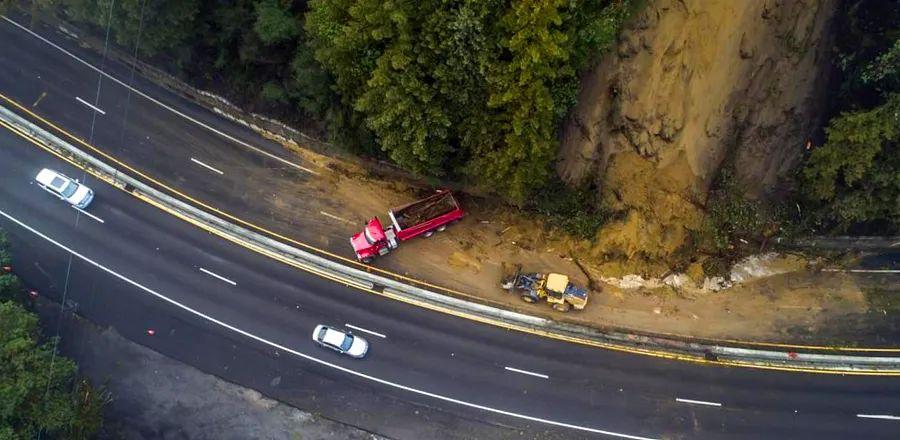Planning a Trip to California? Essential Insights on the Severe Winter Storms

A fresh wave of rain and snow swept through California on Tuesday, and the National Weather Service indicates that the next atmospheric river—a weather pattern often originating in tropical areas, bringing significant moisture and winds—is set to impact Northern California starting Wednesday.
Recent rainfall across California has reached 400 to 600 percent above the usual levels, according to the National Weather Service. “This has led to nearly saturated soils and rising river levels. Today’s heavy downpour will worsen ongoing flooding and increase the risk of flash floods and mudslides, particularly in areas affected by recent wildfires,” the agency cautioned in its January 10 update.
The storms pose a threat to coastal and riverside communities, leaving over 200,000 homes and businesses without power early Tuesday, as reported by poweroutage.us, which monitors utility disruptions.
President Joe Biden declared a state of emergency in California late Sunday, ordering federal assistance to aid the state's response efforts. The Federal Emergency Management Agency (FEMA) has been authorized to coordinate disaster relief initiatives.
The above-average rainfall and snowfall have triggered widespread flood alerts, road closures, and some evacuations. Here’s an overview of the current challenges affecting various regions of California.
Southern California
Meteorologists have warned that Southern California could experience wind gusts up to 60 mph during the storm's peak on Tuesday, with areas like Los Angeles and Ventura counties facing rain rates of up to half an inch per hour. The community of La Conchita in Ventura County, just north of L.A., was advised to evacuate, and the Ventura River reached a record high of over 25 feet on Monday, though levels fell to minor flood stage after the rain eased.
Santa Barbara County
On Tuesday, officials in Santa Barbara County issued a mandatory evacuation order for the coastal community of Montecito and parts of Carpinteria, Summerland, and Santa Barbara, due to the ongoing storm threats.
Santa Cruz County
Evacuation orders were issued on Monday for parts of Santa Cruz County, affecting around 32,000 residents living near swollen rivers and creeks. The San Lorenzo River reached flood stage, and drone footage revealed numerous homes submerged in muddy water, with only the tops of cars visible.
San Francisco, Sacramento, and Monterey Bay
The National Weather Service has issued a flood watch through Tuesday for the entire San Francisco Bay Area, including the Sacramento Valley and Monterey Bay.
Russian River
A flood warning is currently in effect for Northern California’s Russian River in Mendocino County. Weather experts advise motorists and travelers in the area to “turn around, don’t drown” when faced with flooded roads.
Lake Tahoe, Yosemite, and Mammoth Mountain
Recent storm systems have dumped heavy snow across the Sierra Nevada mountain range, including Lake Tahoe, Yosemite, and Mammoth. Many Sierra highways are facing chain requirements and closures due to whiteout conditions, with avalanche warnings issued for backcountry areas. Mammoth Mountain ski resort reported 4.5 to 5.5 feet of snow on Tuesday, with more expected to come.
California State and National Parks Closures
As of January 10, numerous state and national parks are closed (or have partial closures) due to the recent and ongoing storms, including:
- Bolsa Chica and Crystal Cove state parks in Orange County
- Bothe-Napa Valley and Sonoma Coast state parks in Napa and Sonoma counties
- Jedediah Smith Redwoods State Park in Del Norte County
- Mount Tamalpais State Park in Marin County
- Navarro River Redwoods, Russian Gulch, and Van Damme state parks in Mendocino County
- Pinnacles National Park in central California
- Pismo and Hearst San Simeon state parks in San Luis Obispo County
- Redwood National and State Parks along Northern California’s coastline
- Torrey Pines State Park in San Diego County
The California Department of Parks and Recreation maintains an updated list of park closures, encouraging visitors to check frequently for the status of parks they plan to visit to ensure they are open and safe. The National Park Service also provides a list of advisories and closures for California parks.
California Highways
California state highway authorities reported on Tuesday that portions of U.S. and state highways were closed due to flooding, mudslides, rockslides, heavy snowfall, or accidents. This includes lane closures on U.S. highways 101 and 1, two major coastal routes. Be sure to check road conditions on the CalTrans site before driving.
Implications of Recent Snow and Rain for California’s Drought
While the ongoing storms present numerous short-term challenges, observers may be curious if this influx of rain and snow will benefit drought-stricken California in the long run. Unfortunately, the situation is more complex than that.
Karla Nemeth, director of the California Department of Water Resources (DWR), remarked, “The substantial Sierra snowpack is promising news, but these same storms are causing flooding in various parts of California. This illustrates the risk of extreme flooding during prolonged droughts as California faces increased variability between wet and dry periods due to our changing climate.”
The Sierra snowpack provides around 30 percent of California’s water supply and is often termed the state’s “frozen reservoir,” according to the agency. While the current precipitation may assist in replenishing the snowpack and refilling reservoirs, a lengthy path remains to effectively mitigate drought impacts. Past winters with heavy early-season rain and snow have been followed by months of dryness—like the record snowfall in December 2021, which preceded the driest January to March on record.
Nemeth stated, “It’s encouraging to be above average this early in the season, but we must remain vigilant and remember last year’s outcomes. If January through March 2023 resemble last year, we would still conclude the water year in severe drought with only half of an average snowpack.”
Associated Press contributed reporting.
Evaluation :
5/5



